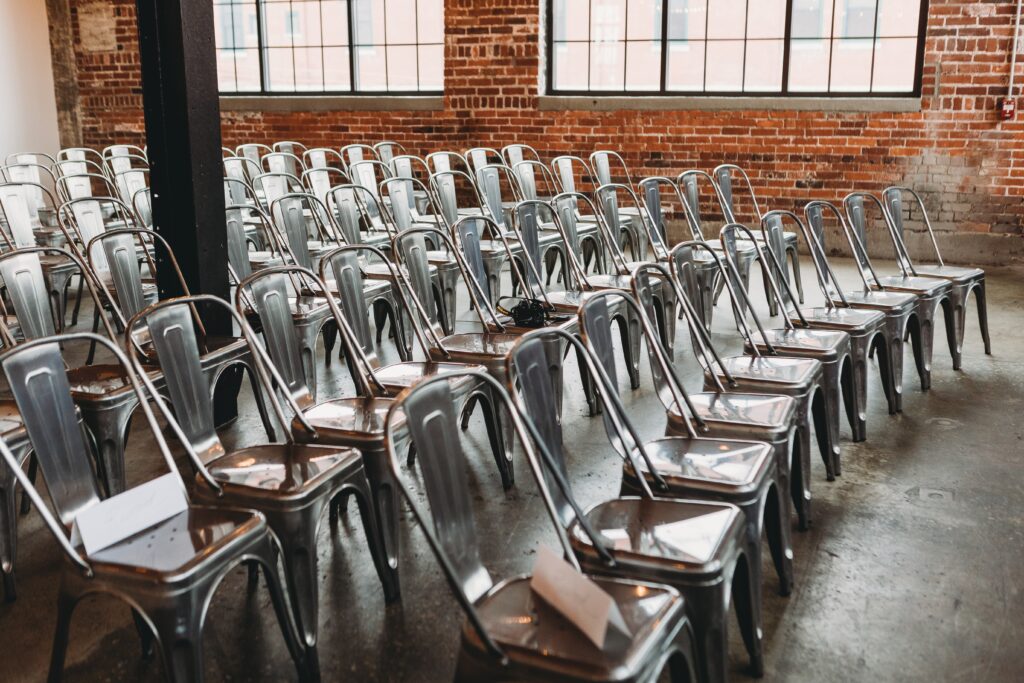In America, the dominance of beer as the go-to alcoholic beverage is beginning to wane, with other options gaining popularity. A recent survey conducted by Gallup revealed that almost two-thirds of Americans consume alcohol, whether it be beer, wine, or spirits, with 69% of respondents reporting that they had consumed at least one alcoholic drink within the past seven days. However, beer is no longer the clear favorite, with liquor gaining ground as the most frequently consumed drink, followed closely by wine. Demographic differences also play a role, with men more likely to reach for beer and women more likely to opt for wine. As beer’s dominance diminishes, the beverage landscape in America is undergoing a shift, and consumers are embracing a wider range of options to satisfy their alcoholic cravings.

Craft Beer Options Are On The Rise
Changing Drinking Habits in America
The drinking habits of Americans have been undergoing significant changes, as revealed by recent surveys. These changes include shifts in preferred alcoholic beverages, demographic differences in drinking patterns, and the declining dominance of beer in the market. Understanding these trends is crucial for industry professionals and consumers alike.
Survey reveals trends in alcohol consumption
A recent survey conducted by Gallup found that almost two-thirds of Americans (62%) consume alcoholic beverages. This percentage has remained relatively consistent since the earliest poll results in 1939. However, variations in drinking habits within different demographic groups have been observed.
Demographic differences in drinking patterns
According to the Gallup survey, middle-aged individuals between the ages of 35 and 54 were most likely to report drinking alcohol. Additionally, respondents with household incomes of $100,000 or more and those with a college education also showed higher rates of alcohol consumption. Interestingly, individuals who reported attending religious services less frequently were more likely to consume alcohol.
Beer’s declining dominance
While beer has traditionally been the most frequently consumed alcoholic beverage in America, its dominance has been declining. According to the Gallup survey, 37% of respondents reported that beer was their most frequently consumed drink. This represents a decrease from previous years. In the early 2000s, beer was a more dominant choice. However, the survey also revealed an increase in the popularity of liquor, with 31% of respondents favoring some kind of liquor as their favorite alcoholic drink. Wine remained a popular choice, with 29% of respondents reporting it as their preferred beverage.
The Most Popular Alcoholic Beverages
Understanding the preferred drinks of Americans is essential for industry professionals and consumers. Analyzing data on the most popular alcoholic beverages provides insights into consistency and changes over time, as well as gender and age differences.
Data on the preferred drinks of Americans
The Gallup survey showed that beer is still the most frequently consumed alcoholic beverage in America, with 37% of respondents selecting it as their drink of choice. Liquor and wine followed closely, with 31% and 29% of respondents respectively. This data highlights the ongoing popularity of these three categories.
Consistency and changes over time
While the popularity of beer has declined in recent years, it remains a top choice for many Americans. Liquor, on the other hand, has seen a rise in popularity, surpassing wine as the second most preferred choice. This shift indicates changing preferences among consumers.
Gender and age differences
The survey also revealed notable differences in preferences based on gender and age. Men were found to be more likely to choose beer as their preferred alcoholic beverage, with 53% of male respondents selecting beer as their most frequently consumed drink, compared to only 22% of female respondents. On the other hand, women were more likely than men to choose wine, with 44% of female respondents reporting it as their preferred drink, compared to 15% of male respondents. Among different age groups, younger individuals between the ages of 18 and 34 showed a higher preference for beer and liquor, while older age groups opted for wine more frequently.

The Rise of Liquor as a Popular Choice
In recent years, liquor has experienced an increase in popularity among American consumers. Understanding the factors contributing to this rise and its impact on wine consumption is crucial for industry professionals and those interested in the evolving drinking habits of Americans.
Increase in popularity of liquor
According to the Gallup survey, the popularity of liquor as a preferred alcoholic beverage has been steadily increasing. In fact, 31% of respondents reported that some form of liquor was their favorite drink, marking the highest percentage recorded by Gallup. This trend indicates a significant shift in consumer preferences.
Factors contributing to the rise
Several factors can be attributed to the increasing popularity of liquor. One possible reason is the growing popularity of craft cocktails and mixology. The creativity and variety offered by cocktails made with different types of liquor have captured the interest of consumers. Additionally, the rise of celebrity-driven marketing campaigns and endorsements has contributed to the allure of certain liquor brands.
Effects on wine consumption
While liquor has gained popularity, the consumption of wine remains significant. However, the shift in preference towards liquor suggests that wine may no longer be the go-to beverage for many Americans. Industry professionals and wine producers should monitor this trend closely to adapt their marketing strategies and meet changing consumer preferences.
Exploring Other Drink Choices
While beer, wine, and liquor remain popular choices for many Americans, there is a growing interest in diverse alternatives. Understanding these alternatives, including non-alcoholic beverage options, and staying informed about emerging trends in the drink industry is crucial for consumers and industry professionals.
Diverse alternatives to beer, wine, and liquor
The drink industry offers a wide range of alternatives to traditional alcoholic beverages. For those looking for a different experience, there are options such as hard seltzers, flavored malt beverages, and ready-to-drink cocktails. These alternative choices cater to consumers’ evolving tastes and preferences.
Non-alcoholic beverage options
In recent years, the demand for non-alcoholic beverage options has grown significantly. This trend is driven by health-conscious consumers and those looking for alternatives to alcohol. The availability of non-alcoholic beers, spirits, and mocktails has expanded, allowing individuals to enjoy the social aspects of drinking without the alcohol content.
Emerging trends in the drink industry
The drink industry is constantly evolving, driven by changing consumer preferences and emerging trends. Some of the emerging trends include the use of natural and organic ingredients, the rise of low-alcohol and sessionable beverages, and the increasing popularity of functional beverages that offer added health benefits. Industry professionals should keep a close eye on these trends to stay ahead of the curve and meet consumer demands.

Factors Influencing Drink Selection
Understanding the factors that influence drink selection is essential for both consumers and industry professionals. From health concerns and personal preferences to religious beliefs, various factors play a role in determining individual drinking choices.
Reasons for abstaining from alcohol
The Gallup survey also explored the reasons why some individuals choose to abstain from alcohol. The most common response (24%) among non-drinkers was simply having no desire or not wanting to consume alcohol. Other reasons included disliking alcoholic beverages, perceiving them as unhealthy, having existing health conditions, fear of the consequences or previous negative experiences, and religious beliefs.
Health concerns and personal preferences
Health concerns and personal preferences play a significant role in drink selection. Some individuals choose to avoid alcohol due to its potential negative health effects, while others prefer certain types of alcoholic beverages based on taste, cultural background, or personal experiences. Industry professionals should consider these factors when developing and marketing new products.
Impact of religious beliefs
Religious beliefs can have a profound impact on drink selection. Certain religions prohibit the consumption of alcohol, leading adherents to abstain entirely. Understanding the influence of religious beliefs is crucial for industry professionals to ensure they are sensitive to the diverse needs and preferences of their target audience.
The Future of Drinking in America
Predicting alcohol trends and understanding changing consumer preferences is vital for industry professionals. Marketing strategies and innovations should consider the expected shifts in drinking habits among Americans.
Predictions on alcohol trends
While it is impossible to predict with certainty, experts anticipate that the decline in beer dominance will continue, with liquor and wine gaining ground. Non-alcoholic and low-alcohol options are also expected to see growth due to increased health-consciousness among consumers.
Changing consumer preferences
Consumer preferences are likely to continue evolving in response to shifting societal attitudes, health concerns, and the availability of new and innovative drink choices. Industry professionals should remain agile and adapt to these changing preferences to stay relevant in the market.
The role of marketing and innovation
Marketing and innovation will play a crucial role in shaping the future of drinking in America. As consumer preferences change, companies must develop creative marketing strategies and innovate new products that cater to evolving tastes and demands. Understanding consumer behavior and leveraging technological advancements will be key to success.
Cultural and Social Implications
The changing drinking habits in America have cultural and social implications that extend beyond the beverage industry. These implications affect social gatherings, events, and the norms and perceptions surrounding alcohol consumption.
Effects of shifting alcohol preferences
As beer’s dominance declines and other alcoholic beverages gain popularity, there will be noticeable effects on social gatherings and events. The traditional concept of beer as a go-to beverage may evolve, influencing the types of drinks served and the drinking culture at social functions.
Impact on social gatherings and events
The preferences and choices of individuals at social gatherings and events may be influenced by changing drinking habits. Hosts and event organizers should consider offering a variety of beverage options to cater to different tastes and preferences.
Changing norms and perceptions
The changing drinking habits in America contribute to shifting norms and perceptions surrounding alcohol consumption. As liquor gains popularity and alternatives to traditional alcoholic beverages emerge, society’s views on drinking may change. This evolution requires a nuanced understanding of cultural and social dynamics.
The Global Perspective
Understanding how drinking habits in America compare to those in other countries provides valuable insights into broader trends and influences. Cultural differences and regional variations can shape and influence the American market.
Comparison to drinking habits in other countries
Comparing drinking habits in America to those in other countries reveals interesting patterns and trends. Different cultures and societal norms result in varying preferences for alcoholic beverages. This global perspective helps industry professionals identify potential opportunities and challenges in the American market.
Regional variations in alcohol preferences
Even within America, there are regional variations in alcohol preferences. Different parts of the country may have specific cultural and historical ties to certain alcoholic beverages, leading to variations in consumption patterns. Understanding these regional preferences allows for targeted marketing strategies and product offerings.
International trends influencing the American market
International trends and developments in the drink industry often have a profound impact on the American market. The globalization of tastes and the influence of international brands can shape consumer preferences and drive changes in drinking habits. Industry professionals should stay informed about global trends to stay competitive in the American market.
Industry Response and Adaptation
The evolving drinking habits in America require breweries and distilleries to adapt their strategies and offerings. Keeping up with changing consumer preferences, introducing new products, and utilizing innovative marketing strategies are vital for success in the industry.
How breweries and distilleries are adjusting
Breweries and distilleries are responding to the changing drinking habits by adjusting their production and marketing strategies. While beer may be declining in dominance, breweries are introducing new and innovative products, such as craft beers and flavored variants, to meet evolving consumer preferences. Distilleries are also diversifying their offerings to include different types of liquor and craft cocktails.
New products and marketing strategies
Innovation is key in the drink industry. Breweries and distilleries are introducing new products that cater to changing consumer tastes and demands. Non-alcoholic and low-alcohol options, as well as functional beverages, are gaining popularity. Marketing strategies are also evolving, with an increased focus on social media, influencer collaborations, and experiential marketing.
Competition and collaboration in the industry
Competition within the industry is fierce, with breweries, distilleries, and other beverage manufacturers vying for consumer attention. To stay competitive, companies are embracing collaborations, partnerships, and mergers to leverage each other’s strengths and tap into new markets. The industry is continuously evolving, and companies that adapt and collaborate effectively are more likely to succeed.
The Evolution of Drinking Culture
Understanding the historical context and societal shifts that have shaped drinking culture in America provides valuable insights into the current trends and attitudes towards alcohol consumption.
Historical context and societal shifts
Drinking culture in America has evolved significantly over time. Different historical events, such as Prohibition, have shaped the perception and consumption of alcohol. Societal shifts, including changing attitudes towards health and wellness, have also influenced drinking habits. By understanding this historical context, we can better comprehend the current state of drinking culture in America.
Changing attitudes towards alcohol consumption
Attitudes towards alcohol consumption have experienced notable changes in recent years. With an increased focus on health, wellness, and responsible drinking, individuals are becoming more conscious of their alcohol intake. This shift is reflected in the rising popularity of low-alcohol alternatives and the increasing demand for non-alcoholic beverages. Understanding these changing attitudes allows the industry to align its offerings with consumer values.
In conclusion, the drinking habits in America are undergoing significant changes. Beer’s dominance is declining, while liquor is gaining popularity. The preferences of Americans vary based on gender, age, and other demographic factors. The industry is responding through the introduction of new products and innovative marketing strategies. Understanding these evolving trends and their cultural and social implications is essential for both industry professionals and consumers alike. As drinking culture continues to evolve, it is crucial to stay informed and adapt to changing preferences and expectations.
